A Grain Elevator Museum In Southern Manitoba
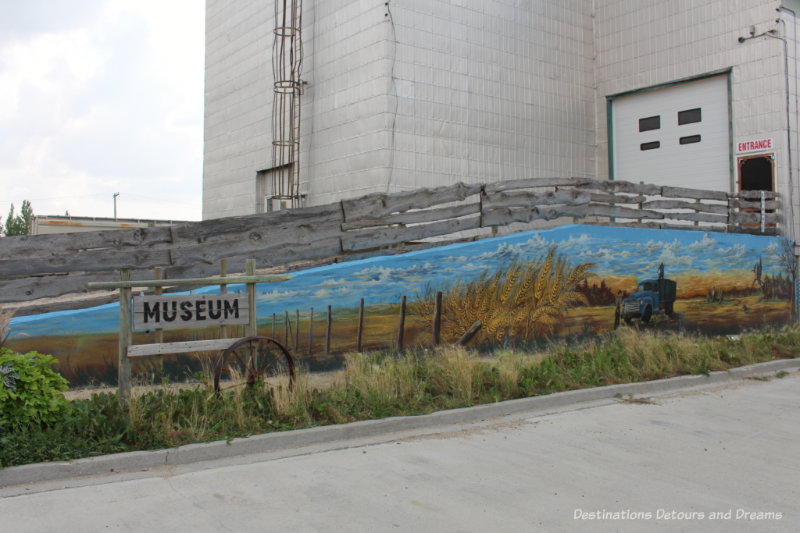
Housed inside a former grain elevator, Prairieview Museum in the small town of Plum Coulee, Manitoba, Canada, houses pioneer artifacts and showcases elevator operations
Small town museums often contain fascinating and unexpected relics and information. This is true of the Prairieview Elevator Museum in Plum Coulee, Manitoba. The museum is housed inside a former grain elevator.
The traditional wooden grain elevator was once an icon on the Canadian prairie. These “prairie sentinels” dominated the flat landscape. The elevators, built along railway lines, were the first step in the trading process moving grain from producers to worldwide markets. The vertical warehouses stored the grain until the grain could be loaded into railway boxcars. According to the Canadian Encyclopedia, there were as many as 5,758 elevators in 1933.
Although a decline in the number of elevators began in the 1950s as the rural population fell and small branch lines became unprofitable, growing up in the 1960s and 1970s I would never have envisioned a day when the traditional grain elevator might disappear completely. Consolidation of delivery points meant larger storage facilities were needed. In the late 1970s, experimentation of new designs using different materials began. By the 1990s, grain companies concentrated on building high-capacity concrete silos.
Many of the traditional grain elevators fell into disrepair or were demolished. Some were sold to producers for personal storage or adapted by companies for fertilizer storage. Today, heritage groups seek to preserve these prairie icons and you will see some maintained as heritage sites or re-purposed into things like museums.
The 125,000 bushel elevator in Plum Coulee was constructed by Manitoba Pool Elevators in 1975 and extensively renovated in 1988. It was closed in 2001 and gifted to the town in 2002. The museum opened in 2010.
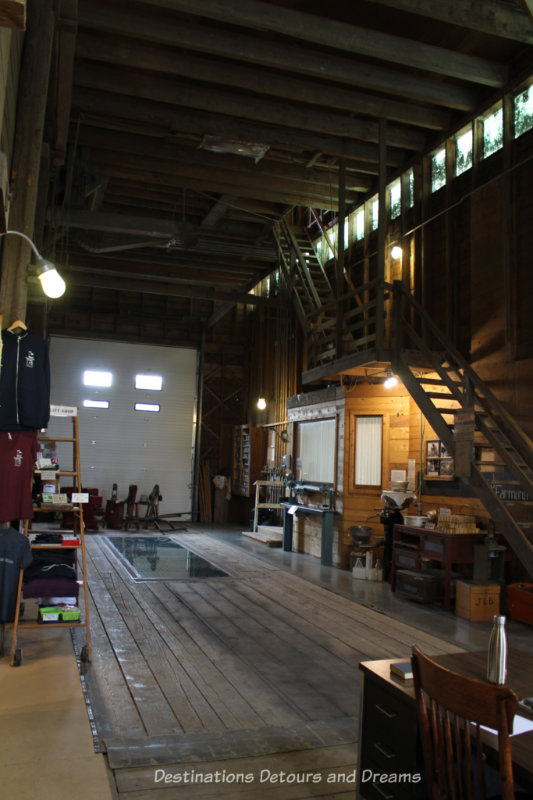
The museum feels different than other museums as soon as you enter. The tall entryway has wood beams on the ceiling, a large loading door at the back where farmers would drive their trucks through, and a glass viewing panel on the floor covering the grated pit where the grain would be dumped.
Rooms with exhibits run off the entryway in somewhat of a rambling fashion because of the elevator layout. Rustic wood walls, wood or plywood floors, and a lingering dusty grain scent are reminders you are in an old elevator.
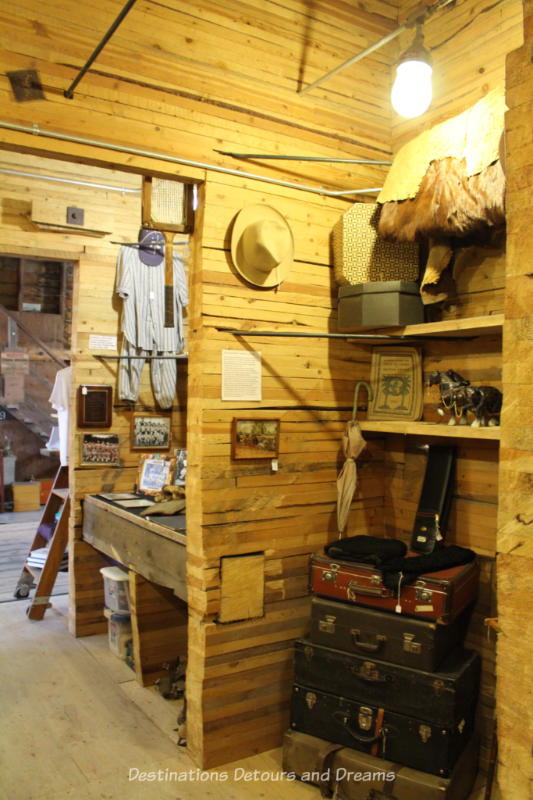 Grain storage bins have been cleverly transformed into display areas
Grain storage bins have been cleverly transformed into display areas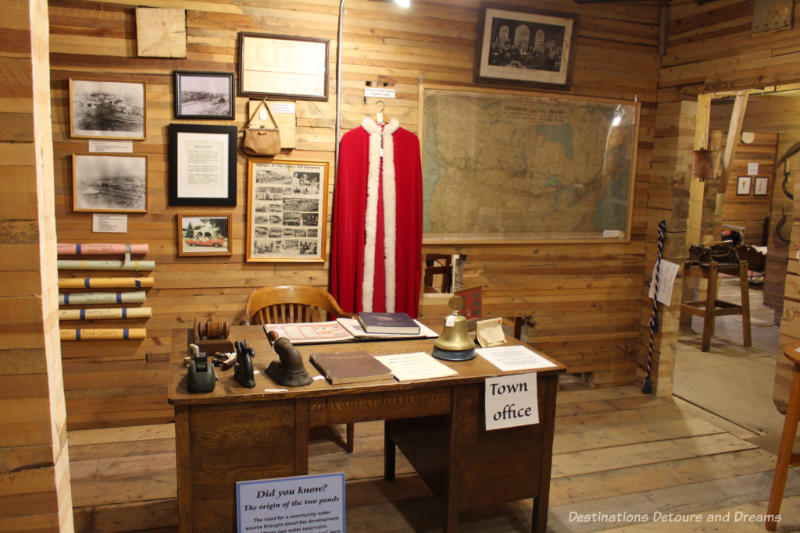 One of the first rooms you encounter is a historical town office
One of the first rooms you encounter is a historical town officeLike many small town museums, the Prairieview Elevator Museum contains items, photos, and information about the town’s history that are of more interest to people with a connection to the town than the general public, but there are also displays of broader appeal relating to the early Jewish, Ukrainian, German, and Mennonite pioneers and an eclectic collection of artifacts.
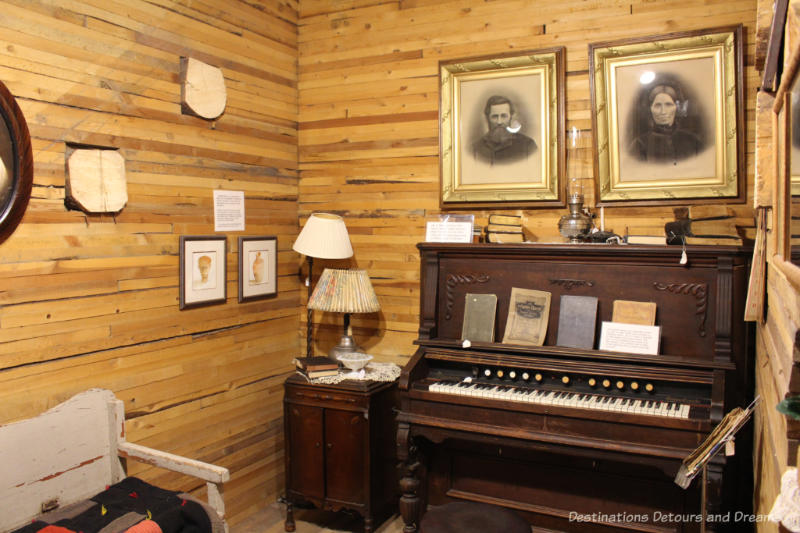
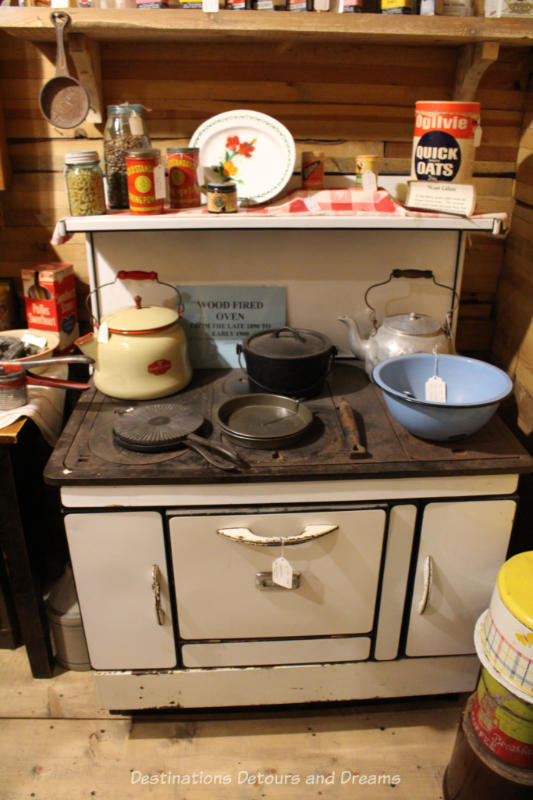
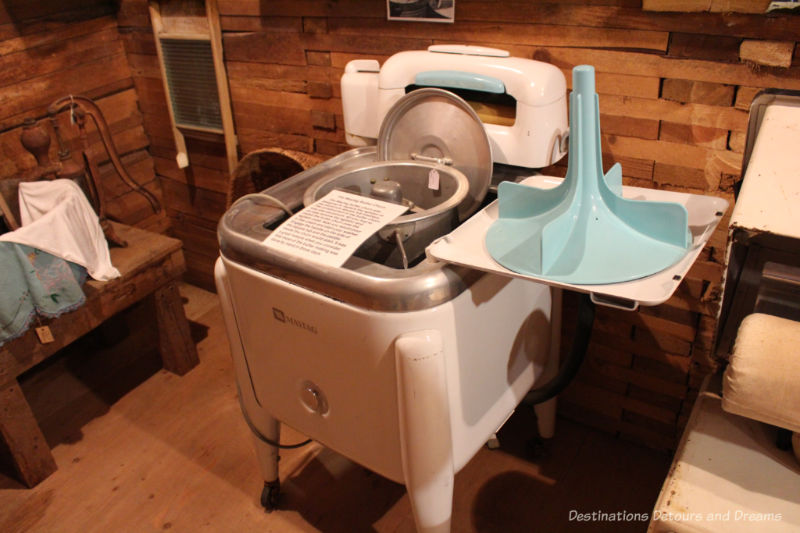 The Maytag butter churn was designed to replace the aluminum square tub in washers. You removed the agitator and installed the churn over the agitator post, then poured in the cream, and started the washer.
The Maytag butter churn was designed to replace the aluminum square tub in washers. You removed the agitator and installed the churn over the agitator post, then poured in the cream, and started the washer.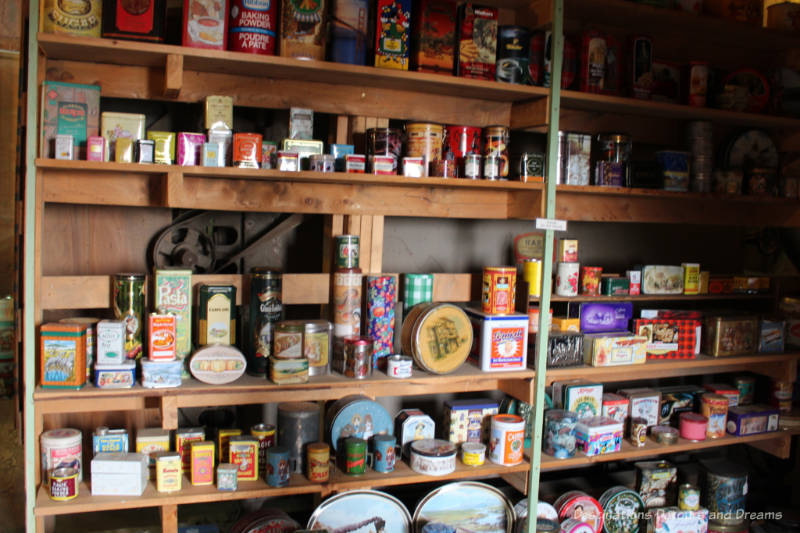 A collection of tin cans in the upstairs room. Most of these came from one person who had saved them in her basemen.
A collection of tin cans in the upstairs room. Most of these came from one person who had saved them in her basemen.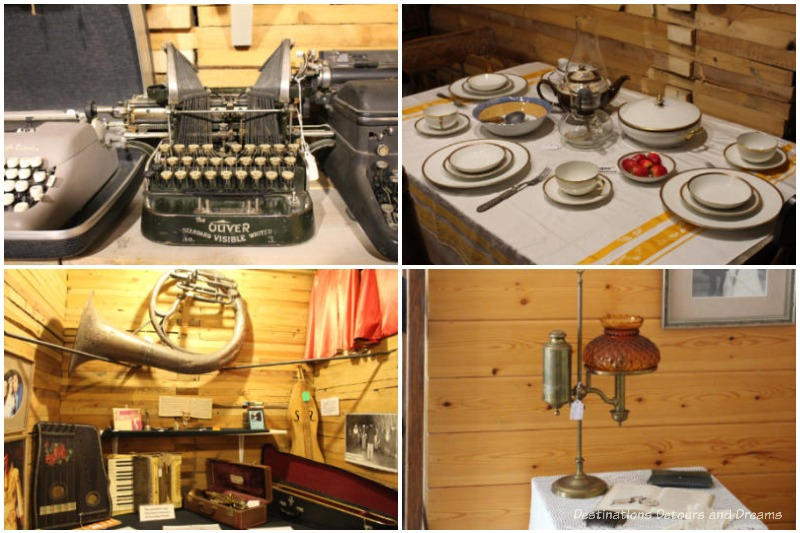
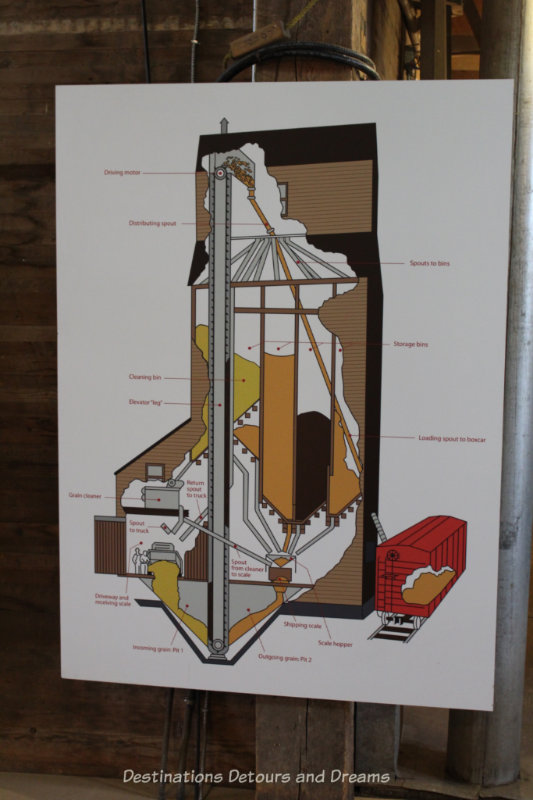
Displays and information about the operation of a traditional elevator are a highlight of the Prairieview Elevator Museum. Grain was moved from the pit to the top of the elevator and the distributing spout via the “elevator leg”, a vertical conveyor belt with attached buckets. The grain elevator operator directed the flow of grain into the appropriate bin by turning a large steel wheel. To load the stored grain into a boxcar, a slide in the appropriate bin was opened to allow the grain to flow out into an auger. Operations in today’s new elevators are computerized and controlled digitally.
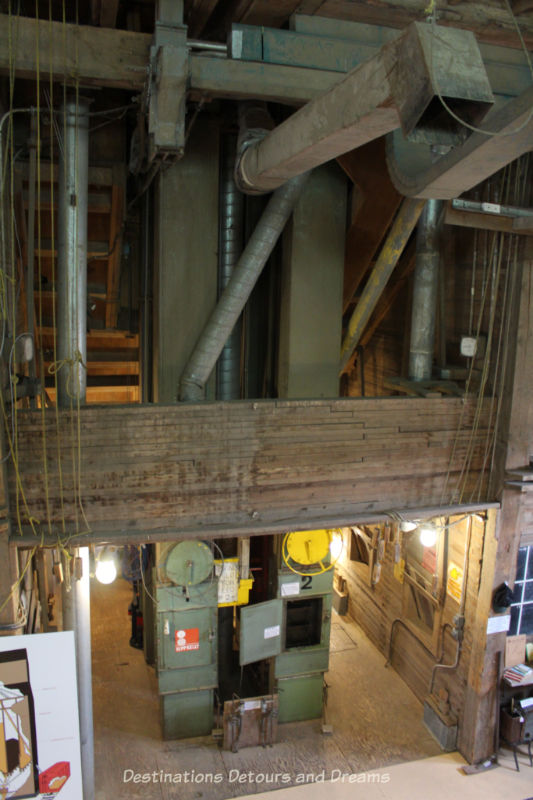
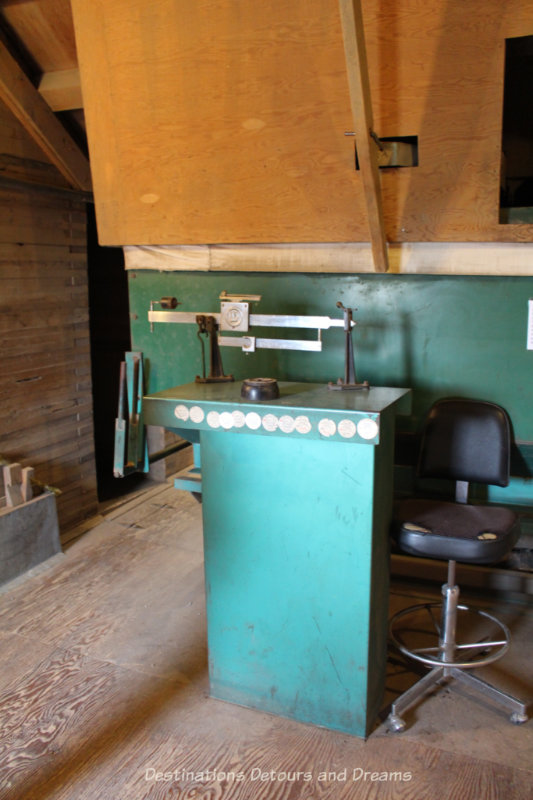 Scale used to weigh trucks before and after unloading grain to determine amount of grain in the load
Scale used to weigh trucks before and after unloading grain to determine amount of grain in the load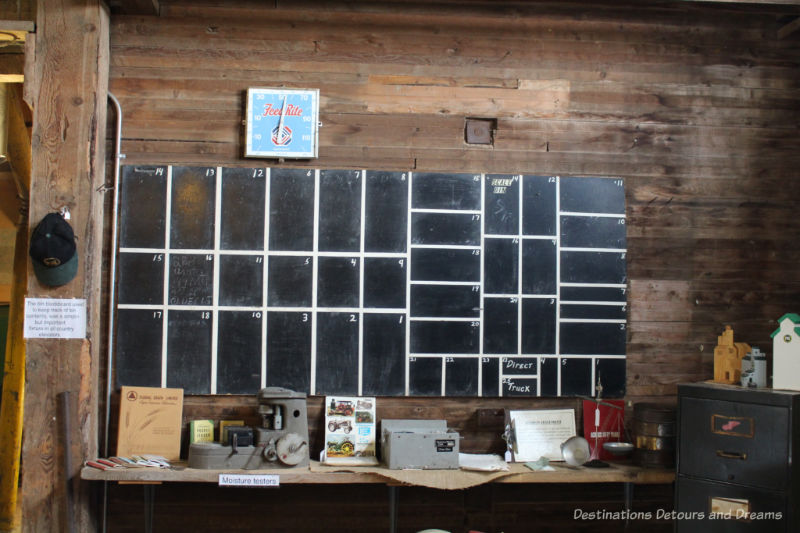 Chalkboard to keep track of what grain was in each bin
Chalkboard to keep track of what grain was in each binPlum Coulee is located along Highway 14 in southern Manitoba approximately 32 kilometres (20 miles) west of Highway 75 (the major route between the city of Winnipeg and the U.S. border). As of 2011, its population was 843. Prairieview Museum is open on Tuesdays to Saturdays in July and August. You may want to confirm hours with the museum before visiting.
Never miss a story. Sign up for Destinations Detours and Dreams free monthly e-newsletter and receive behind-the-scenes information and sneak peaks ahead.
PIN FOR LATER
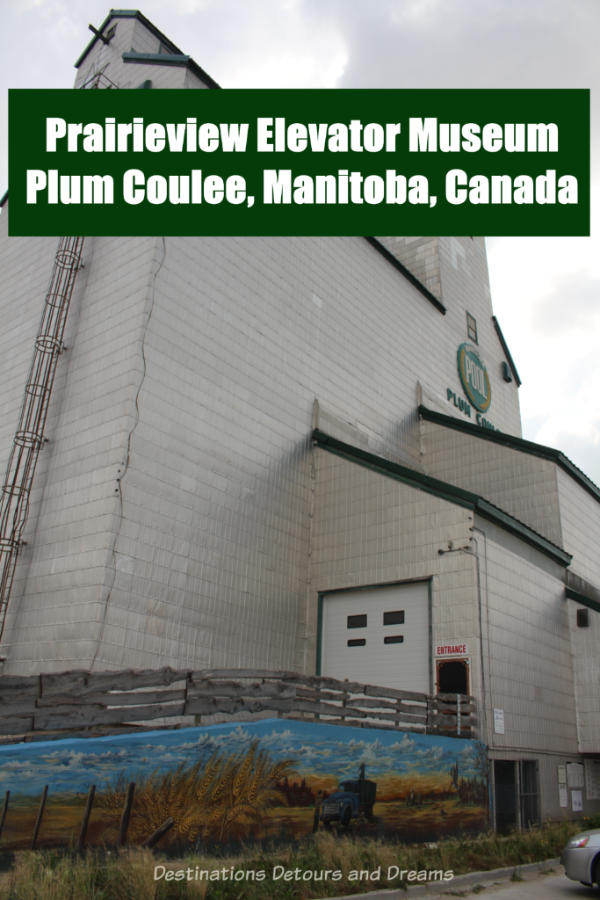

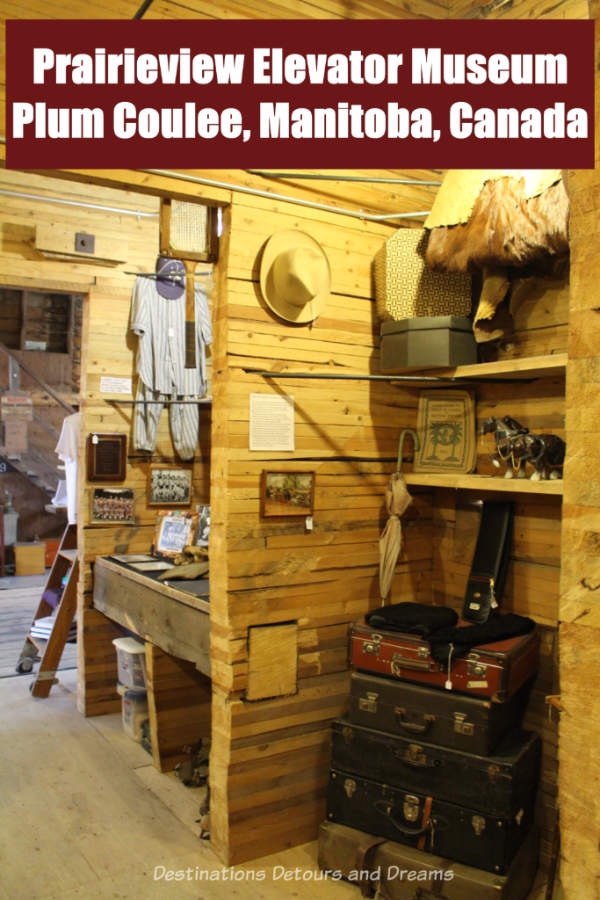




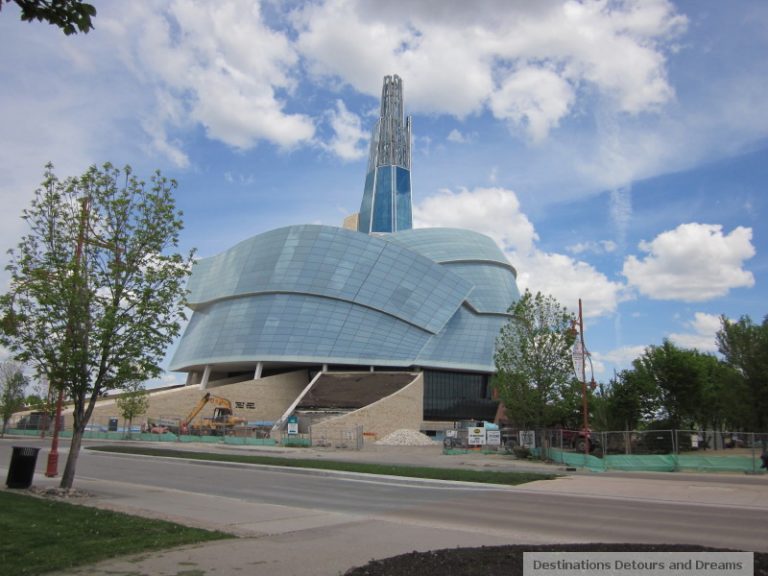

Wow! There is a museum for just about everything.
Ken, the old elevators were such an iconic symbolic of the Canadian prairies, it is good to see some preserved and re-purposed in such a way.
I will have to visit. Did not know about this museum. When I was a little girl I used to go to this elevator with my grandfather when he was delivering grain. He had a farm nearby in Gnadenthal. He sometimes let me stay in the cab while our truck was hoisted up so the grain could be unloaded. Thanks for the tip. MaryLou
MaryLou, with that history, you may find things in this museum that have a personal connection. I, too, have family history with Plum Coulee, but it goes back a couple of generations and I never spent any time in the town myself.
It is nice to see that some elevators are being saved for historic purposes. They truly were an icon of the prairies.
I love the innovation of converting a washing macine into a butter churn!
Eva, I’m pleased to see these prairie icons remembered and some preserved for history. The butter churn certainly was ingenious. I wonder how well it actually worked. I don’t think I’ve come across one in any other museum I’ve visited.
Thank you for this article! I’ll try to get my family out there to understand grain elevators which are/were so iconic. When I went to Canada for the first time in the 1980s the elevators could still be seen everywhere and I kept taking pictures of them every time I came back because to me, they truly are the cathedrals of the prairies! When I traveled to Canada with my husband after a break of more than a decade in 2001 there were hardly any left. I remember my disappointment and sadness. I would love to show them to my children now, who will visit Canada for the first time, so this is a valuable recommendation.
Heike, I recently did another road trip across the prairies and was again struck by how the landscape has changed without these old grain elevators everywhere. The museum at Plum Coulee is very interesting. There are also a few other elevator museums across the prairies. In Inglis, Manitoba, a group of five historic elevators have been restored and are now a National Historic Site. Spruce Grove, a small town just west of Edmonton, has an elevator museum (I toured that recently and the enthusiastic tour guide gave a good overview of the elevator workings). St. Albert, just outside Edmonton, also has an elevator museum. The Canadian Grain Discovery Centre in Nanton, south of Calgary, features a series of elevators. All of these sites are only open during the summer, although it may be possible to make special arrangements at other times. Nanton is only open weekends. Some other heritage village sites, such as the Heritage Park Historical Village in Calgary, have elevators on site. I’ve been to the Heritage Park and it is well worth visiting for lots of reasons, but I didn’t get as good an overview of the elevator workings as in the elevator museums themselves.
Where my family came from and where I lived from age 6 to 13 ( 1948 – 1955) I have been to the museum but I am looking forward to a visit in spring with my children and grandchildren who do not know the area.
Pam, your family connection should add another level of interest in the museum.
My name is Jerry Georges. I did help build this elevator back in 1975. After the completion of this wooden elevator, the cost of wood increased by 17% I was told.The best to my knowledge this was one of the last wooden elevators built out of wood. I was told the cost to build this elevator back in 1975 was about a half of a million dollars. This was starting to be to costly, elevator were going to be built out of concrete. At the completion of the elevator I did sign my name, at the top of the elevator on one of the bucket elevator legs.
Jerry Georges Nov / 75
Jerry, thanks for sharing this information about your involvement with the building of the elevator. It must be nice to see the elevator you worked on still standing and in use, even if not for its original intent, when so many of the wooden elevators are now gone.